Setting up a fun playroom doesn’t have to be expensive. I know how fast toys and gear can add up, but I’ve found some great ways to keep things simple and cheap.
In this post, I’ll share budget-friendly playroom ideas that are still full of fun. You don’t need fancy furniture or a big space.
With a few smart adjustments, any room can become a playful spot that kids will love. I’ve included ideas for storage, crafts, play zones, and more.
Most of them use things you may already have at home. I’ve tried to keep it all doable, even if you’re short on time or money.
Let’s jump in and upgrade your space into something special, without breaking the bank!
Why a Playroom Matters?
A playroom is more than just a spot for toys. It gives kids their own space to play, grow, and explore.
When kids have a space just for them, they learn to be more independent. They can play without needing help all the time. It also helps keep the rest of the house tidy because toys have a place to stay.
Having a playroom doesn’t mean you need a big room or lots of money. Even a small corner with a few baskets and books can work.
It’s about making a space that feels fun and safe.
A playroom can help kids learn, use their imagination, and enjoy quiet time or active play. Best of all, it gives them a space that’s truly theirs.
Creative Playroom Ideas on a Budget
Ready to set up a fun playroom without spending too much? These budget-friendly ideas will help you create a space your kids will love:
1. Use What You Already Have
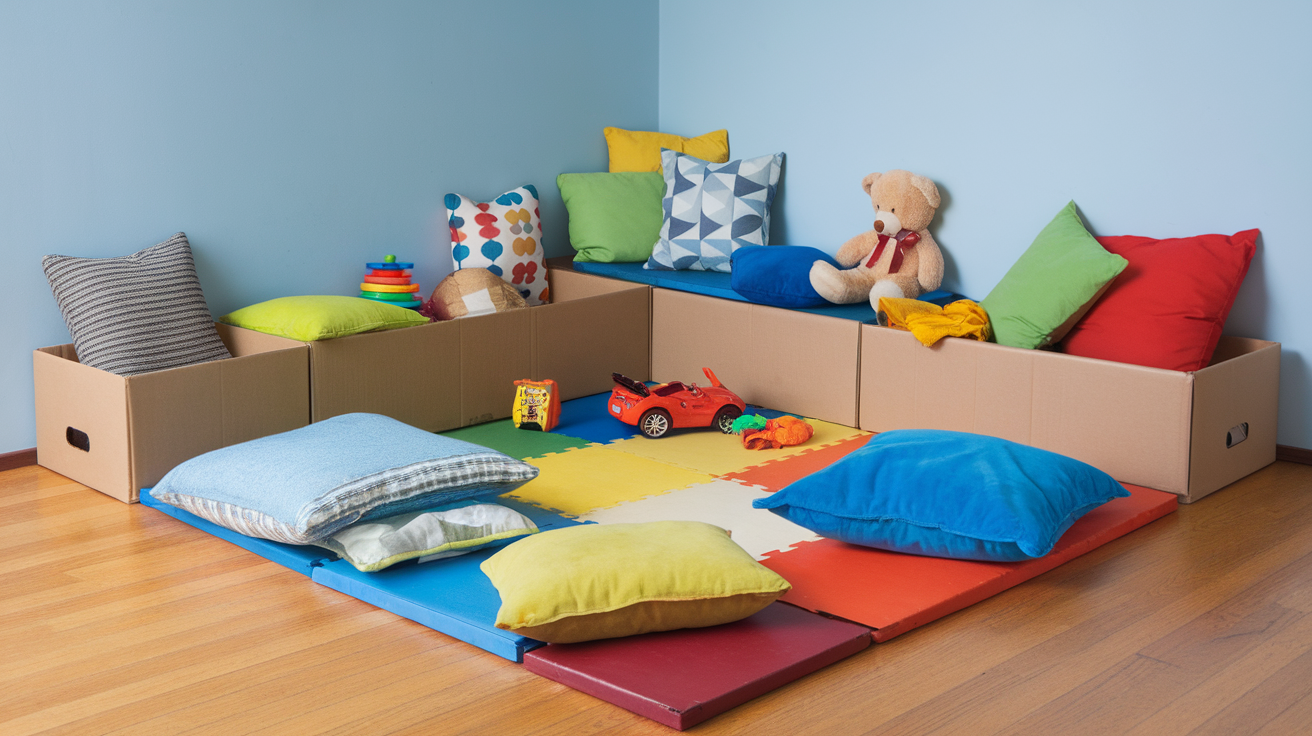
Before buying anything new, take a walk through your home.
You may be surprised by what you already own that can be used in a playroom. Extra pillows can turn into a reading corner.
Blankets can become forts or tents. Storage bins or cardboard boxes can hold toys or art supplies.
Baskets in the kitchen, plastic tubs under the bed, or shoe boxes from the closet can all be used again in new ways. This saves money and helps clear out clutter at the same time.
2. Make a Reading Nook
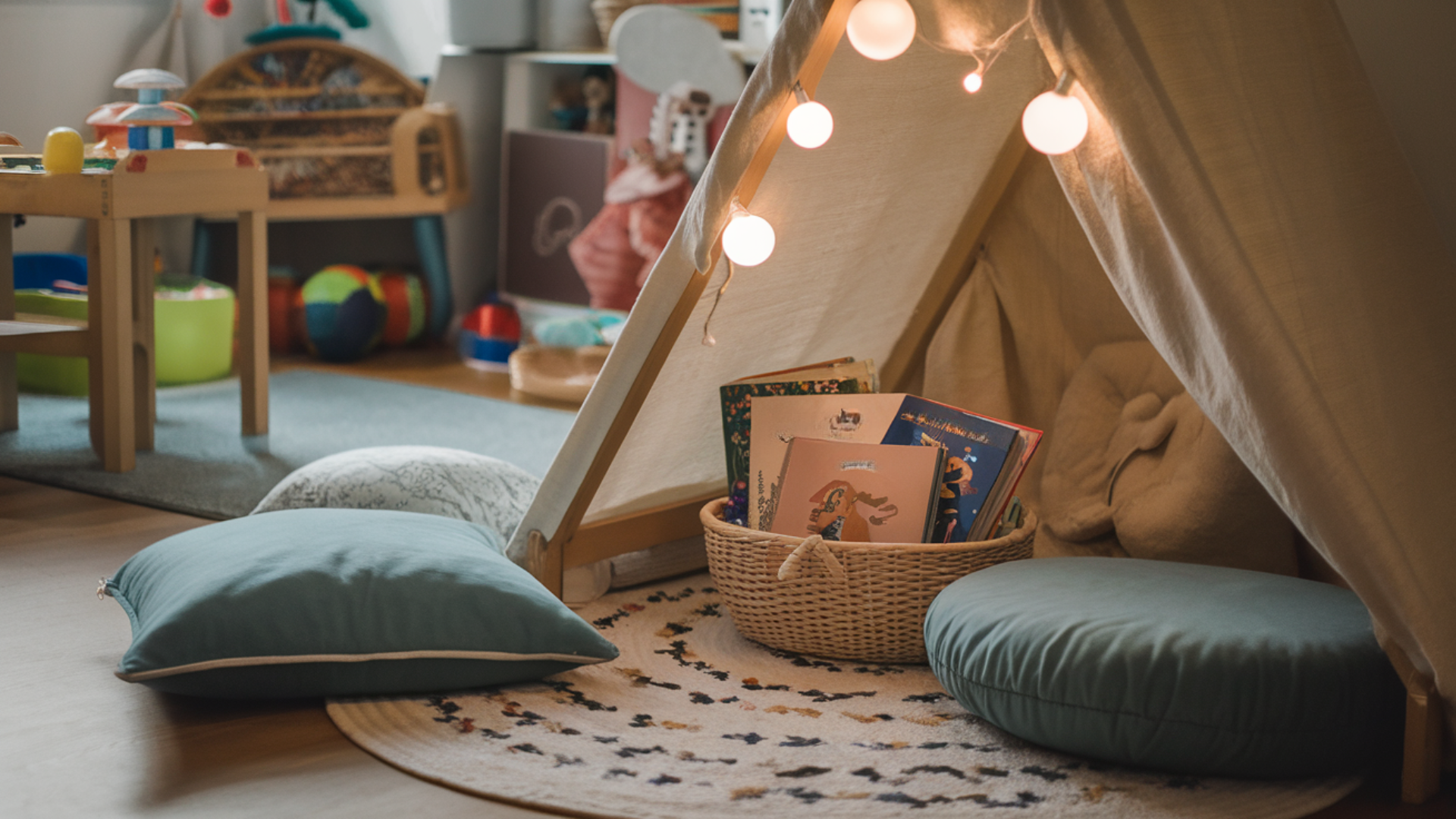
Creating a reading space is simple and cozy. Choose a quiet corner and lay down a soft rug or blanket.
Add a few floor pillows or even a bean bag. Put a small basket of books nearby so kids can choose their favorites.
Hang a sheet or curtain from the ceiling to make a little tent.
You can even add fairy lights or a clip-on lamp for a warm glow. This becomes a quiet, happy spot for story time and learning.
3. Paint a Wall With Chalkboard Paint
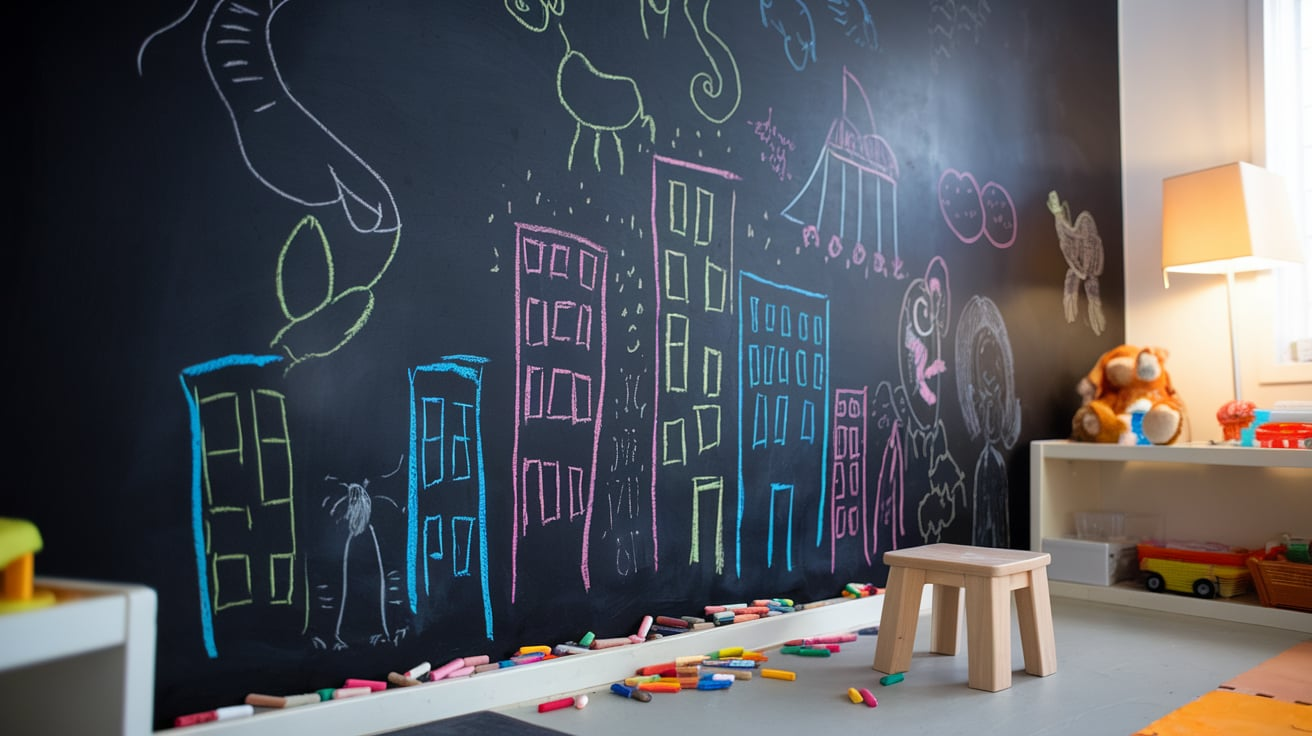
A wall covered in chalkboard paint is like a giant drawing pad for your child.
It’s cheap, easy to apply, and brings hours of fun. Kids can draw pictures, write their name, or play games like tic-tac-toe.
If you can’t paint the wall, no worries. Try peel-and-stick chalkboard sheets or stick-on whiteboards instead.
They work great and can be removed without damage.
4. Use Tape to Make Roads or Games
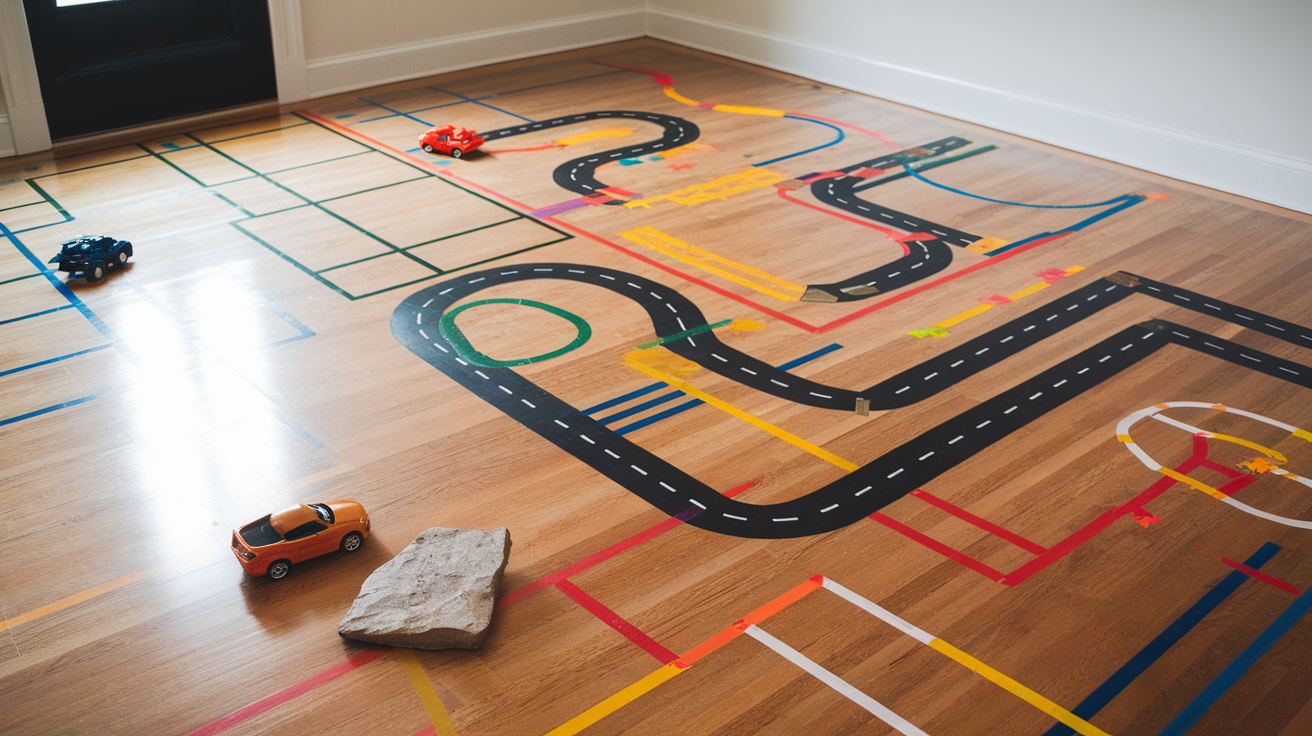
Tape is a fun and safe way to create games right on the floor. Use colored masking tape or painter’s tape to build:
- Roads for toy cars
- A hopscotch path
- A race track
- A shape-sorting grid
The best part? The tape comes off easily and doesn’t leave marks. It’s also cheap, so you can change the setup often.
5. Build With Cardboard Boxes
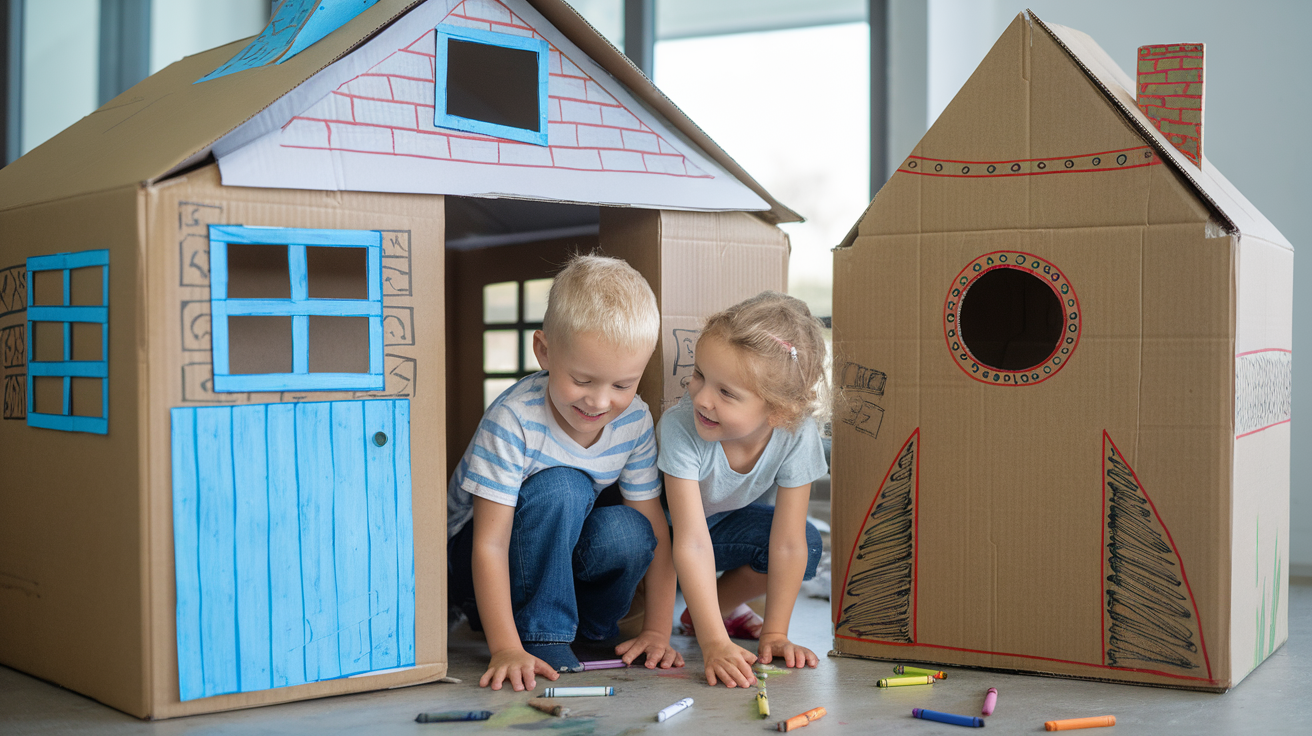
Large cardboard boxes can become anything your child dreams up.
A playhouse, a rocket ship, a grocery stand, or a castle, all from one box.
Cut out windows and doors, and let your child decorate them with crayons, markers, or stickers.
This type of play boosts creativity and imagination. And best of all, it’s free!
6. Rotate Toys
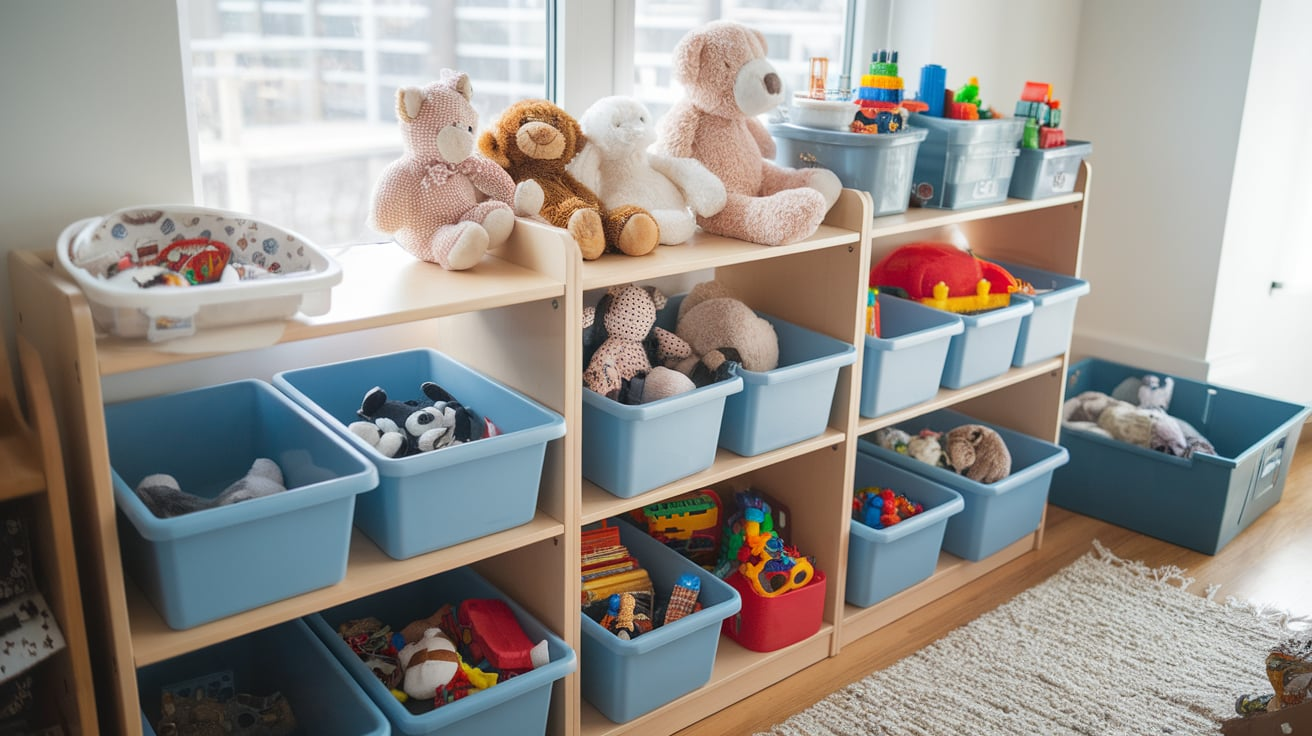
Kids often forget about toys they don’t see every day. Instead of buying more, try rotating what’s available.
Keep some toys in storage and bring them out every few weeks. When they come back, they’ll feel new again.
This also helps reduce mess and makes it easier for kids to focus on one toy at a time.
7. Create a Dress-Up Area
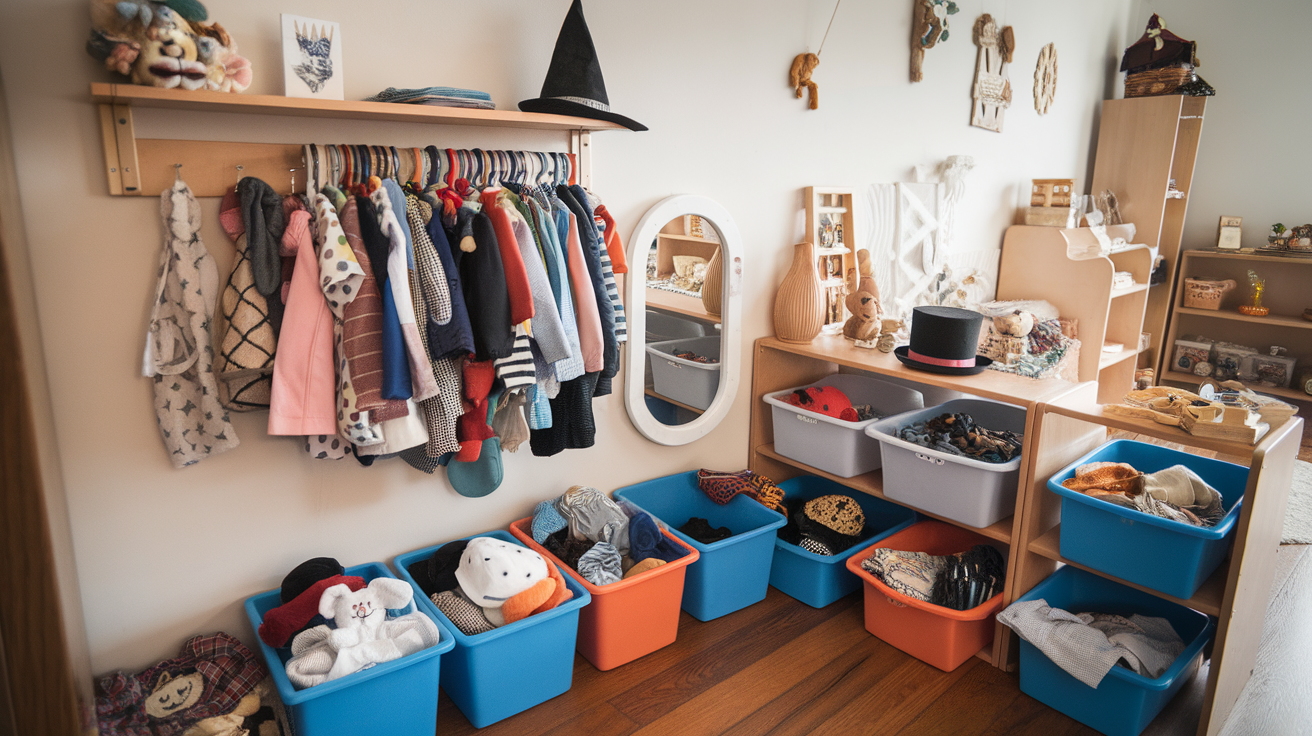
Kids love pretending to be someone else. Gather old hats, scarves, shirts, or Halloween costumes and keep them in a bin or on hooks at child height. You can add:
- A small mirror so they can see their outfit
- A few props like bags, glasses, or costume jewelry
- Labels to keep things tidy
Check thrift stores or yard sales for cheap costume pieces. It’s a great way to spark imagination.
8. Set Up a Craft Station
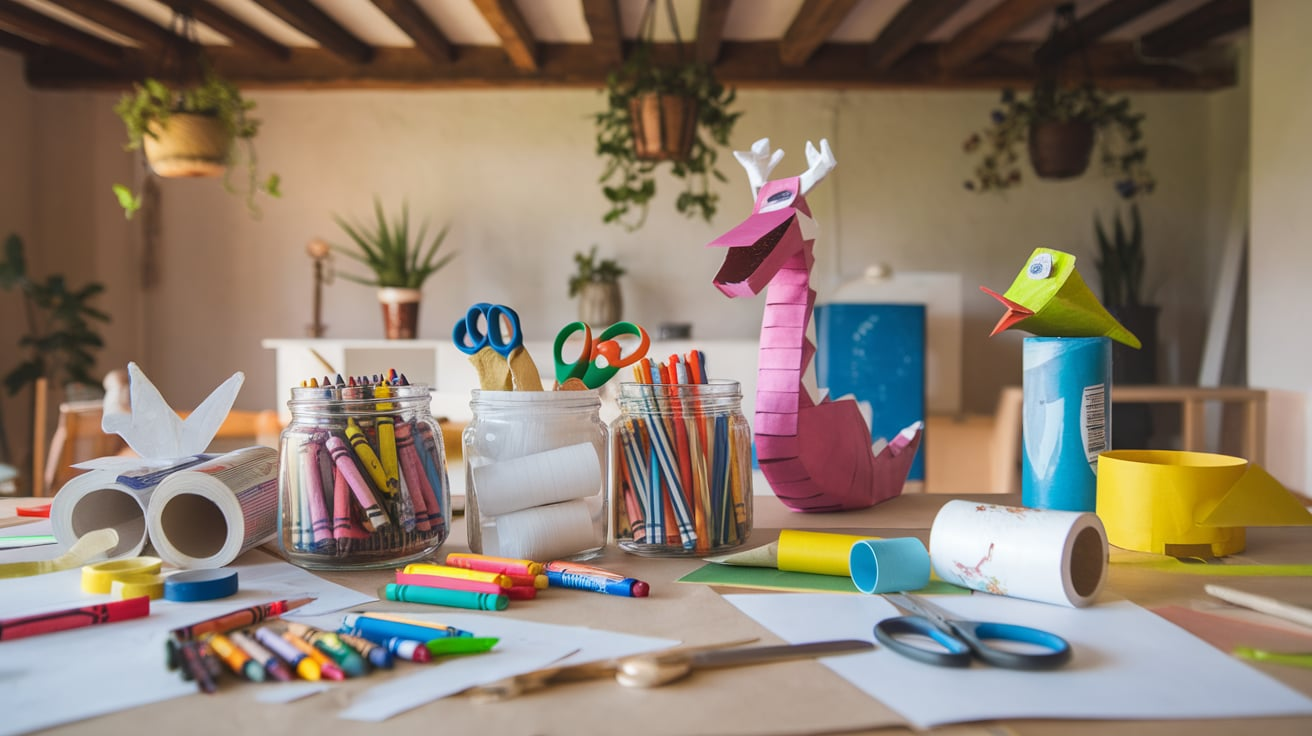
A craft area doesn’t need to be fancy. All you need is a small table and chair. Use jars, cans, or bins to store markers, paper, glue, scissors, and tape.
You can reuse items such as toilet paper rolls, cardboard scraps, bottle caps, and magazines for various projects.
Dollar stores are also great for stocking up on affordable supplies. Crafting helps with focus, fine motor skills, and creative thinking.
9. Hang Art on the Walls

Show your child that their art matters by displaying it.
String up some twine across a wall and use clothespins to hang their drawings. Or buy cheap frames at the dollar store to create a mini gallery.
Rotate the art every few weeks to keep it fresh and engaging. This not only makes the room colorful but also boosts your child’s confidence.
10. Make a Puzzle or Game Shelf

Use a low shelf or bookcase to keep puzzles and board games organized. Stack them in a way that kids can see the covers and reach them easily.
You can sort games by type, matching games, counting games, or memory games. This teaches responsibility and helps kids clean up after themselves.
11. Create a Sensory Bin
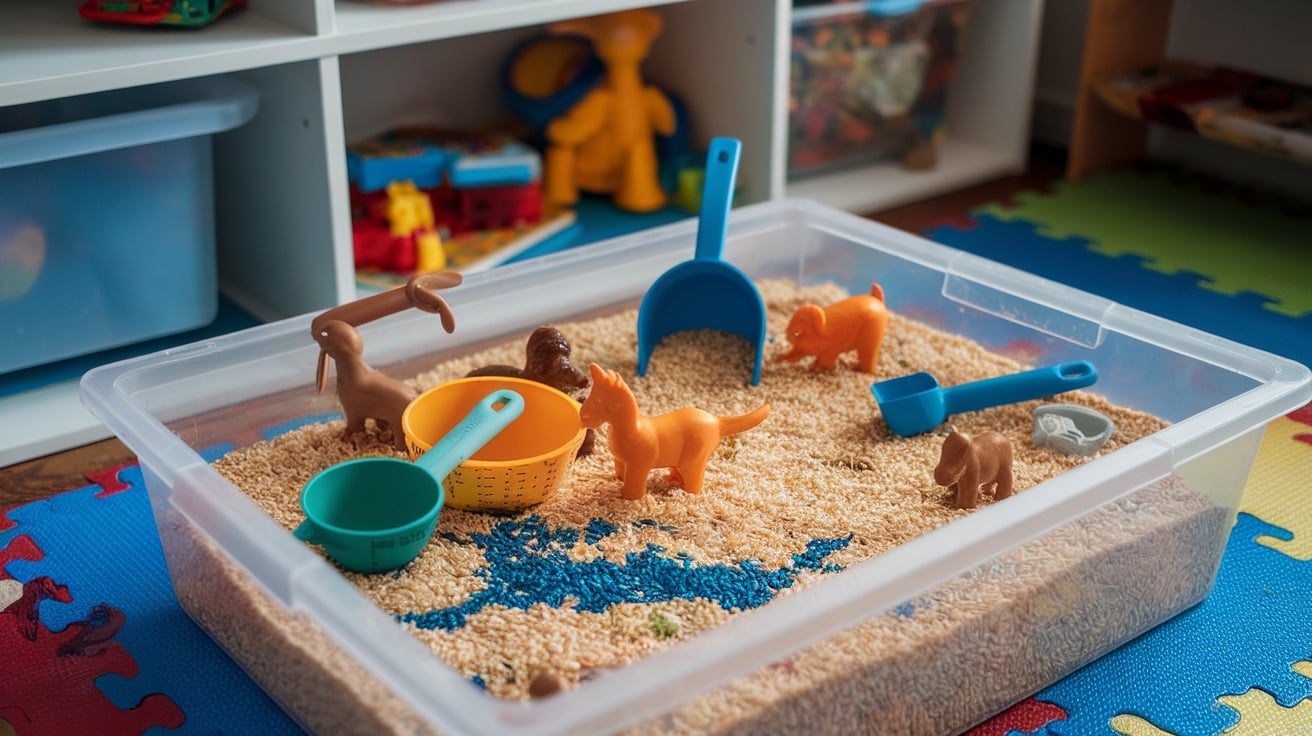
A sensory bin is a great way for kids to explore textures and practice fine motor skills. Use a plastic storage bin and fill it with:
- Dry rice or beans
- Dried pasta
- Sand or water beads (for older kids)
Add scoops, spoons, plastic animals, or mini cups. Always supervise young kids so they don’t put anything in their mouths. This type of play is calming and helps kids focus.
12. Make a Mini Art Gallery
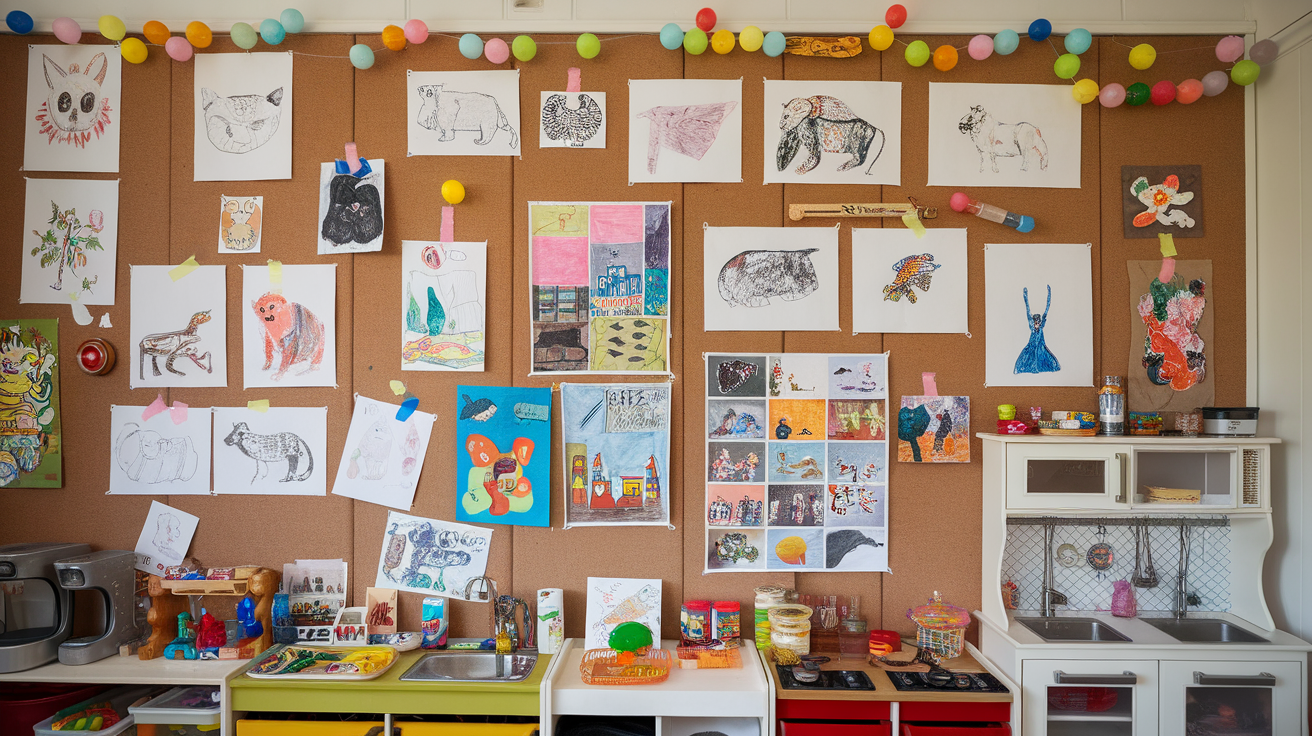
Choose one wall and turn it into your child’s own art showcase. Use painter’s tape, washi tape, or a corkboard to display their favorite creations.
You can make it more interactive by letting them decide what to hang each week. Add a small “title card” with their name and the date for a fun museum-style feel.
13. Add a Music Corner
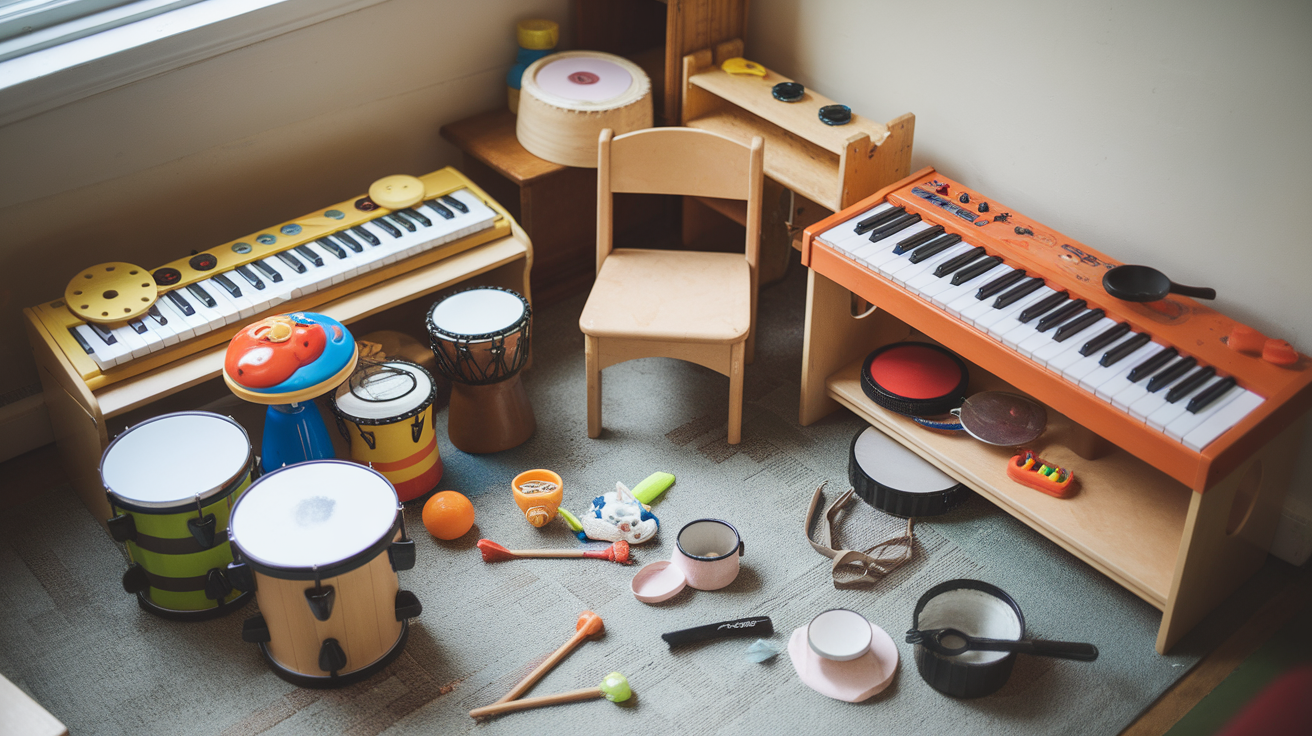
You don’t need real instruments to explore music. Gather toy drums, maracas, a toy keyboard, or even homemade items like:
- Pots and wooden spoons
- Rice-filled bottles for shakers
- Two wooden sticks as rhythm sticks
Put all instruments in a bin or basket. Turn on some music and let your child play along. Music time helps with rhythm, memory, and energy release.
14. Use a Small Tent or Canopy
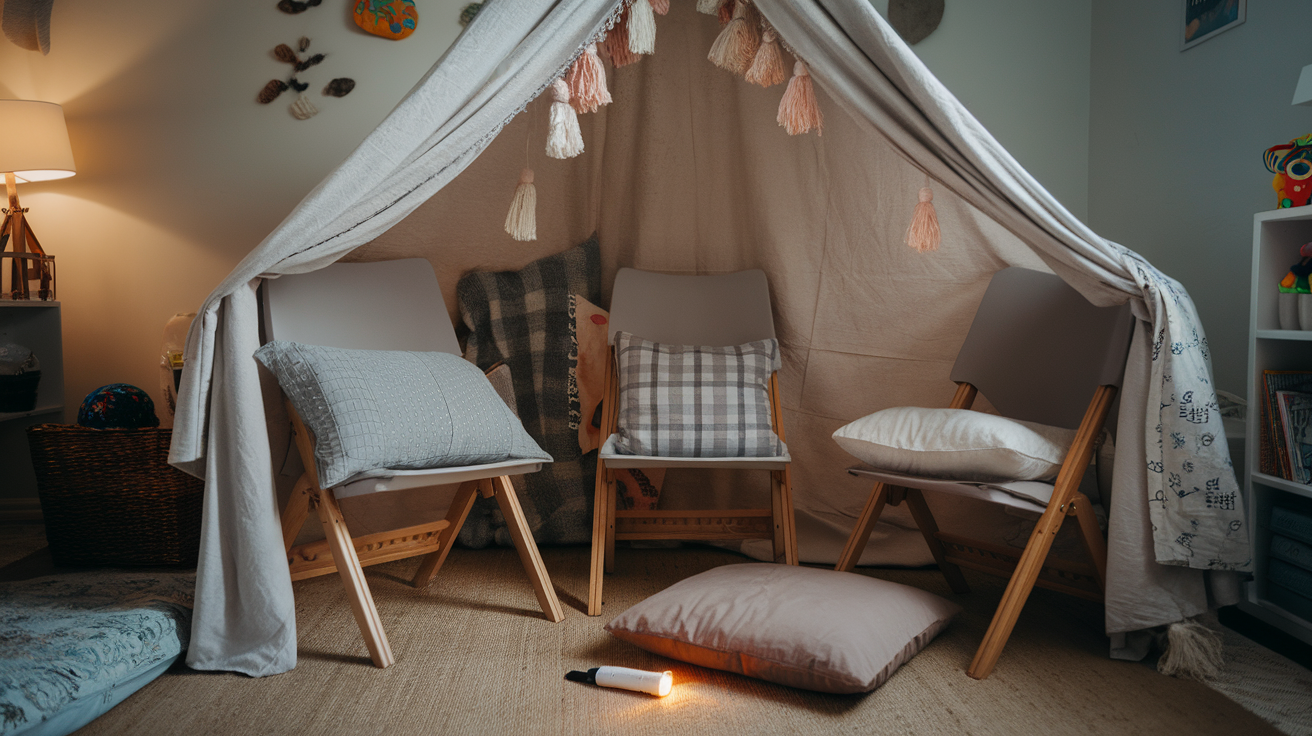
Kids love little spaces they can hide in. A cheap pop-up tent or a DIY canopy made with sheets and chairs can become a reading spot, nap zone, or pretend campsite.
Add a few pillows, a blanket, and a flashlight for extra fun. It gives kids a private place to relax, pretend, or just be still.
15. Create a Learning Wall

A learning wall is a great way to add color and teach at the same time. Use posters or printed pages with:
- The alphabet
- Numbers
- Days of the week
- Shapes and colors
Hang them low so kids can see and touch them. You can even make your own with colorful paper and markers.
This helps with early learning and makes the room feel more like a fun classroom.
16. Try a Toy Library

Kids get bored with the same toys after a while. But that doesn’t mean you have to keep buying new ones.
A great idea is to swap toys with friends, neighbors, or family. Set up a small toy library where everyone takes turns sharing clean and safe toys.
Make a system where each family brings a few toys to trade once a month. You can label them, make a simple checkout list, or use bins with names.
This keeps the toy collection fresh and exciting, without spending a cent.
17. Use Low Shelves for Storage

When toys are stored up high, kids can’t reach them. That often leads to a mess or frustration.
Instead, use short shelves or small cube organizers. This makes it easy for kids to grab what they want and put it back when they’re done.
Label the bins or boxes with simple words and pictures. For example, “blocks,” “cars,” or “books.”
This teaches kids to sort, organize, and take care of their stuff. It also helps build independence.
18. Add a Mirror Wall

Young kids love looking at their reflection. A mirror wall can keep them busy and curious.
Use a safe plastic mirror panel and attach it low on the wall so babies and toddlers can see themselves while sitting, crawling, or playing.
It helps with self-recognition and makes the room feel bigger and brighter.
You can find shatter-proof mirror tiles online or at discount stores. Just make sure it’s safely secured to the wall.
19. Set Up a Mini Stage
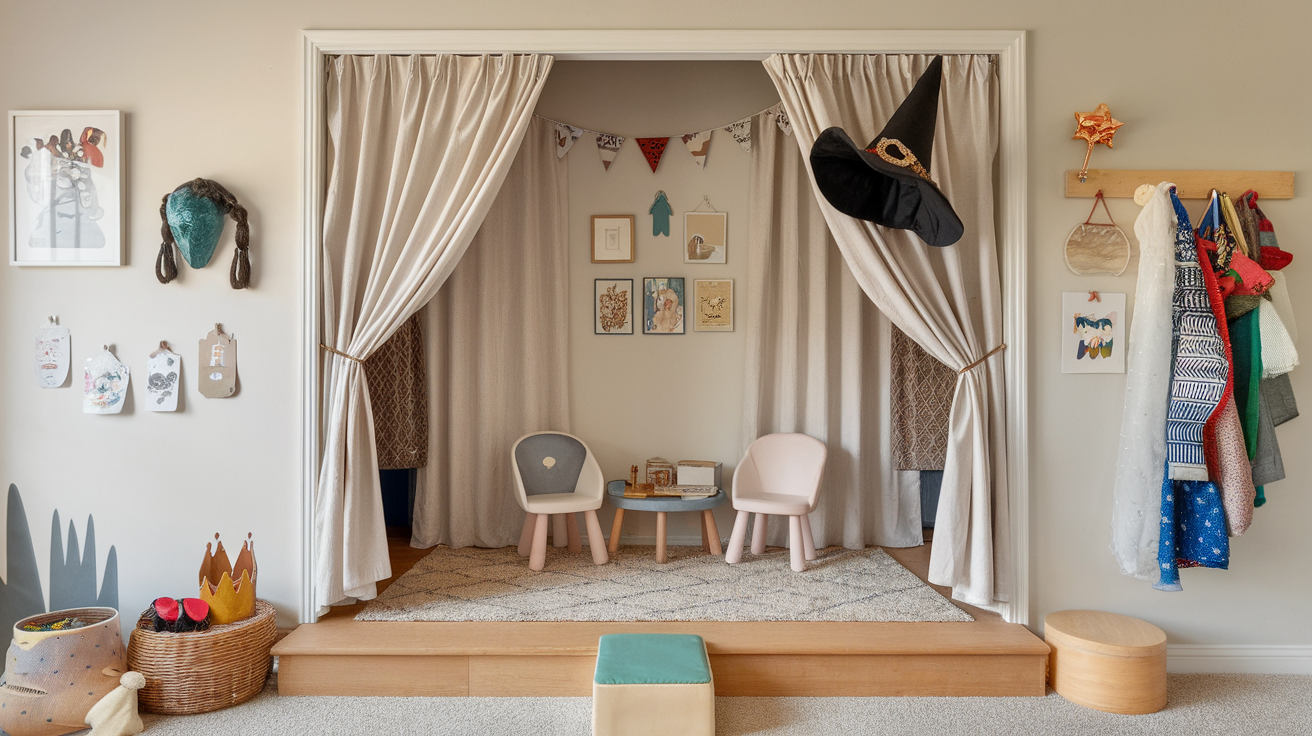
Turn your playroom into a little theater! Use a small rug or mat as the stage.
Hang a curtain or old sheet on a rod or string to act as a backdrop. Kids can sing, dance, tell stories, or act out their favorite shows.
Add simple props like hats, scarves, or costumes from home.
Performing helps kids build confidence, use their imagination, and speak in front of others. It’s also a great way to spend time together as a family, cheering them on!
20. Build With Blocks
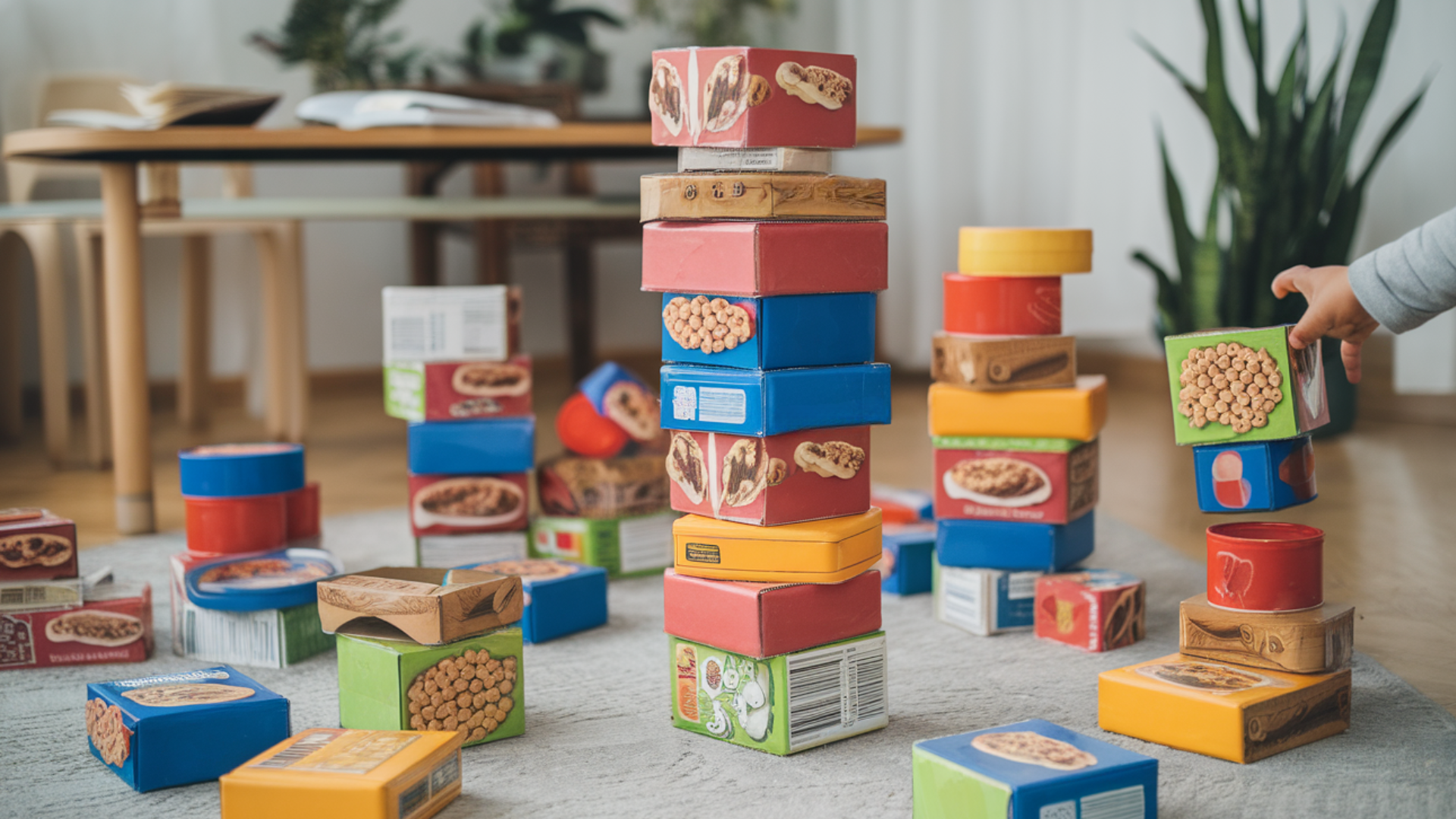
Blocks are great for learning and fun. But you don’t need to buy expensive sets. You can make your own blocks using:
- Empty food boxes (like cereal or pasta boxes)
- Clean plastic containers
- Cut wood scraps with sanded edges
Kids can build towers, houses, or animals. Then knock them down and start again!
It teaches balance, problem-solving, and hand-eye coordination, all with things you already have.
21. Use a Pegboard for Hanging Toys

A pegboard is a smart way to store toys, tools, or craft items. You can hang baskets, buckets, or hooks on it to hold:
- Art supplies
- Toy cars
- Dress-up gear
- Mini bags or puzzles
Mount it on the wall at kid height so everything is easy to see and reach. Pegboards come in many sizes and are easy to paint to match the playroom colors.
22. Add a Bean Bag or Soft Chair
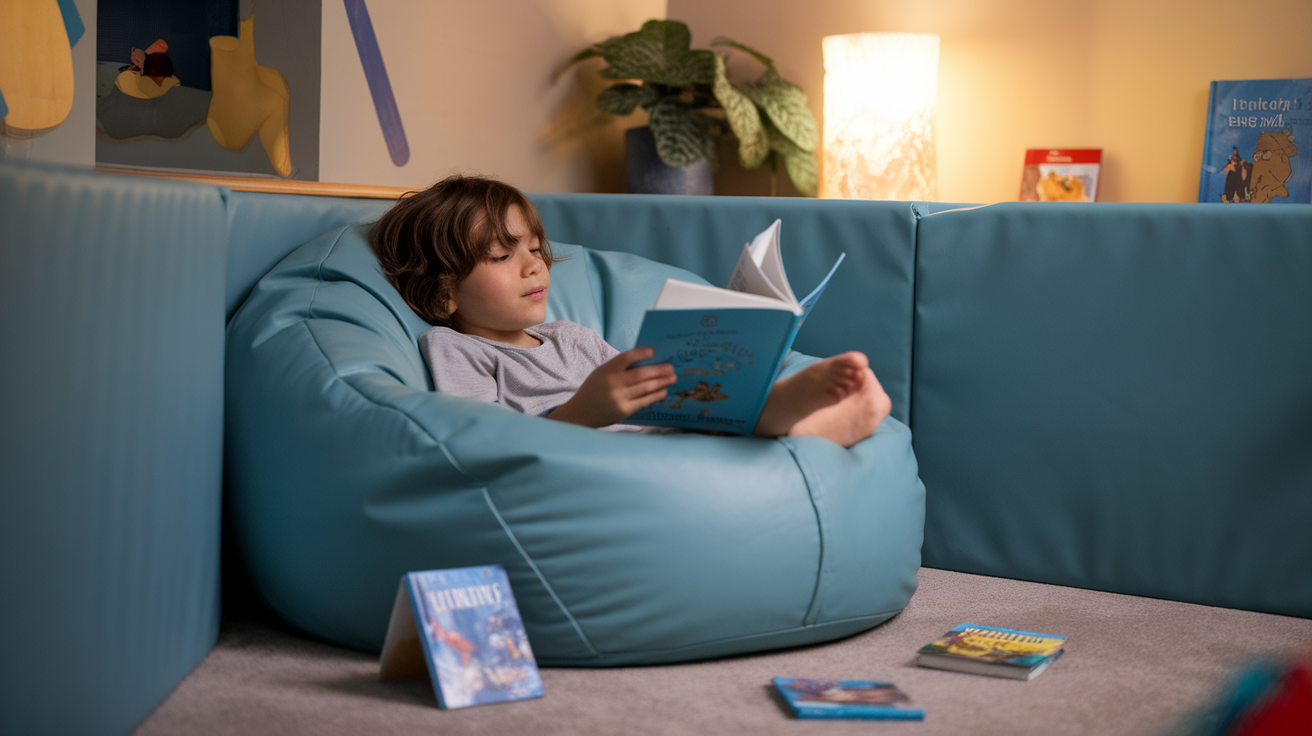
Every playroom needs a cozy place to relax. A bean bag or soft floor chair is perfect. Kids can sit and read, nap, or watch something quietly.
You can buy one cheap, find one secondhand, or make your own with old fabric and soft stuffing (like an old pillow or blanket).
Choose a fun fabric pattern to add color and personality to the space.
23. Make an Activity Jar
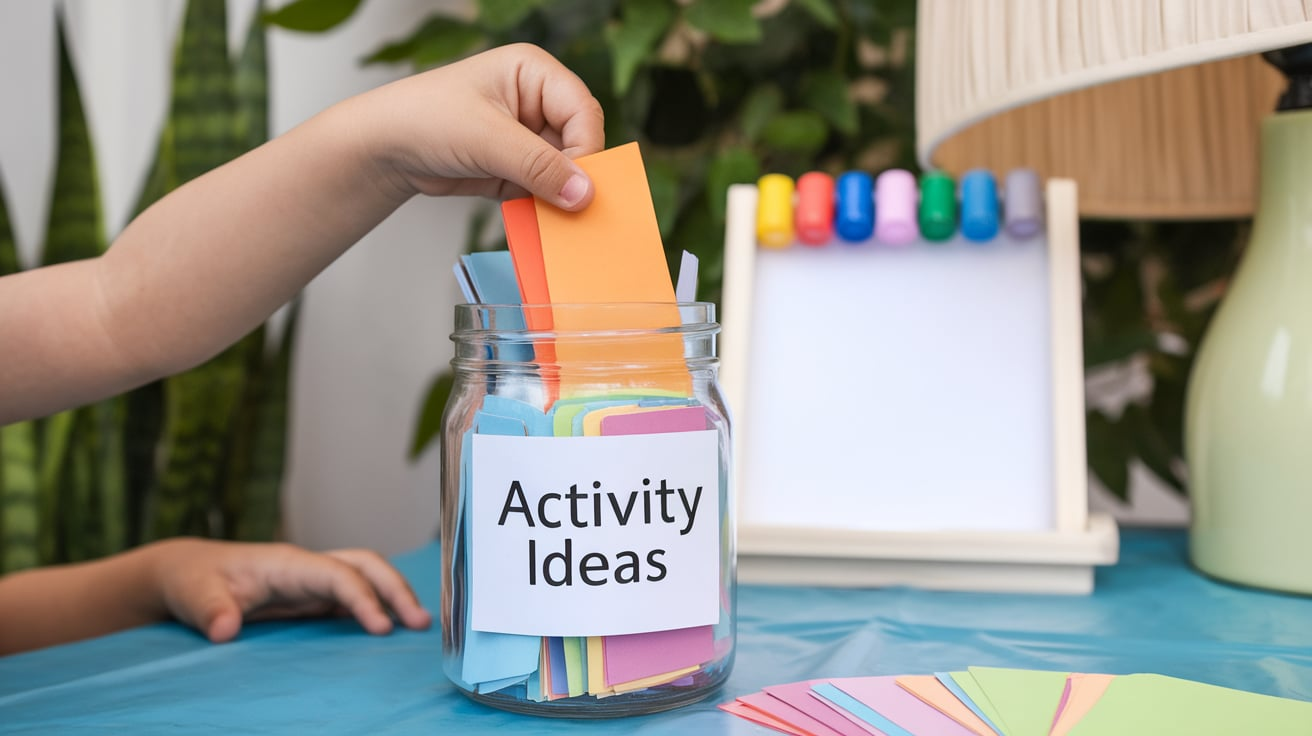
Sometimes kids say, “I’m bored,” even when surrounded by toys.
An activity jar can help! Write fun and simple play ideas on slips of paper. Put them in a jar or box. Let your child pick one when they’re stuck.
Ideas can include:
- “Build a tower out of pillows.”
- “Draw a picture of your favorite animal.”
- “Pretend you’re a chef and cook a play meal.”
- “Find 3 toys that start with the letter B.”
- “Dance to your favorite song.”
It turns free play into a little surprise game!
24. Use Rugs to Define Spaces
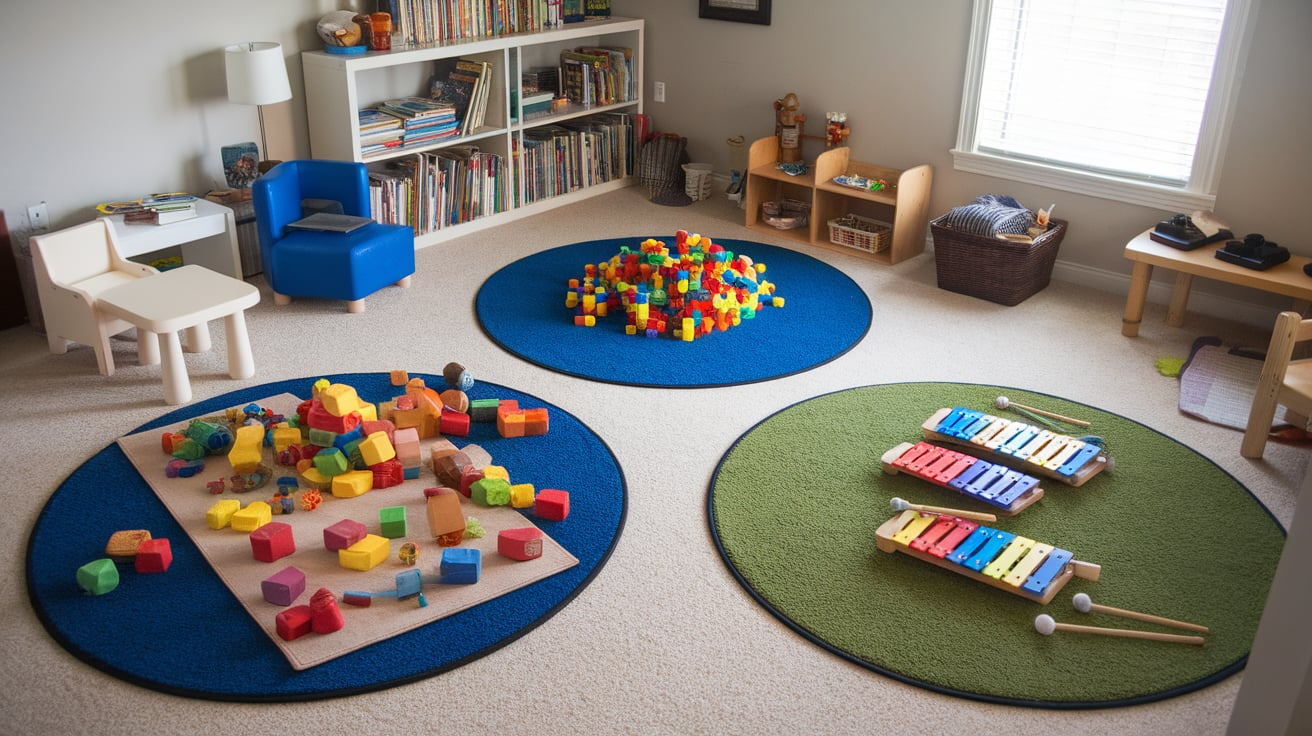
Rugs are not just for comfort. They also help break up the room into clear play zones. You can use a rug for:
- A reading corner
- A music or dance area
- A puzzle and board game zone
Even small rugs from dollar stores or thrift shops can work. They add warmth, color, and help kids learn where to go for different types of play.
25. Try Wall Decals
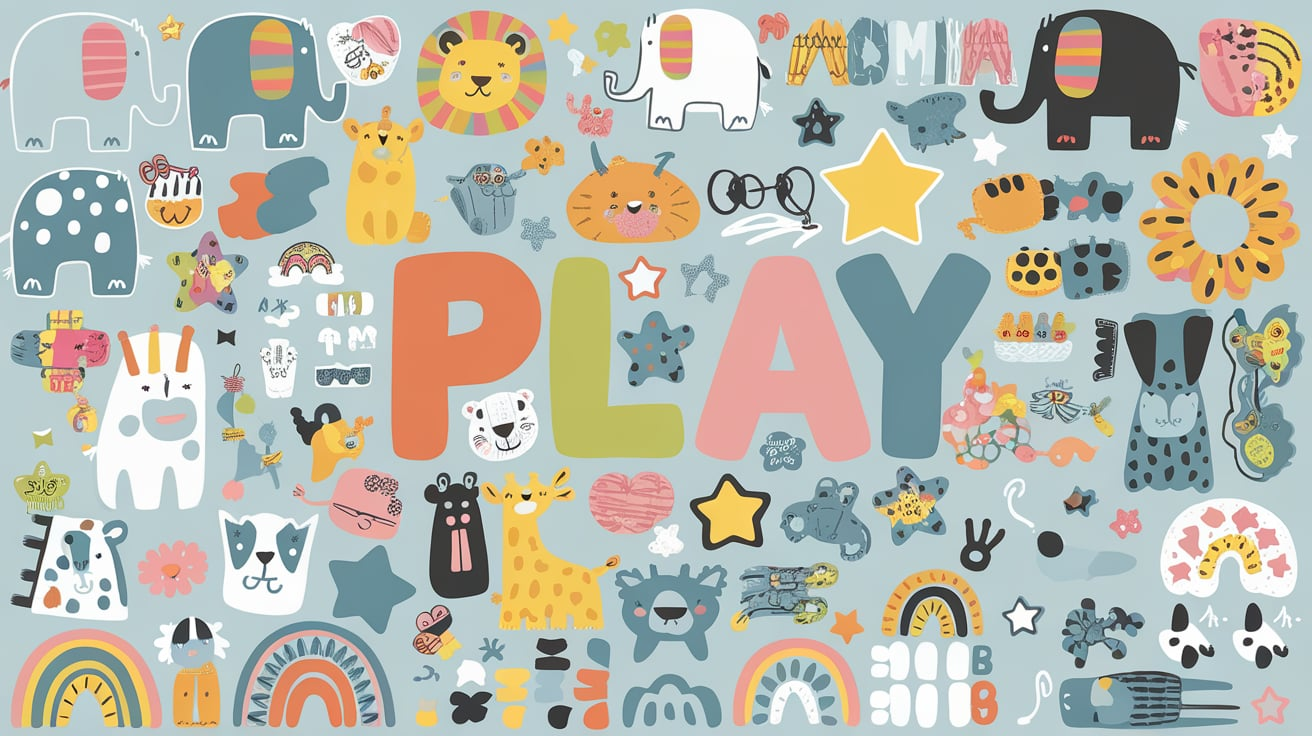
Wall decals are like big stickers. They’re easy to put up and easy to take down. You don’t need to paint or spend a lot of money to make the walls fun.
Choose decals that match your child’s interests, such as animals, trucks, stars, rainbows, or the alphabet.
They make plain walls feel bright and fun. You can change them out when your child’s taste changes, too!
26. Make a Quiet Corner
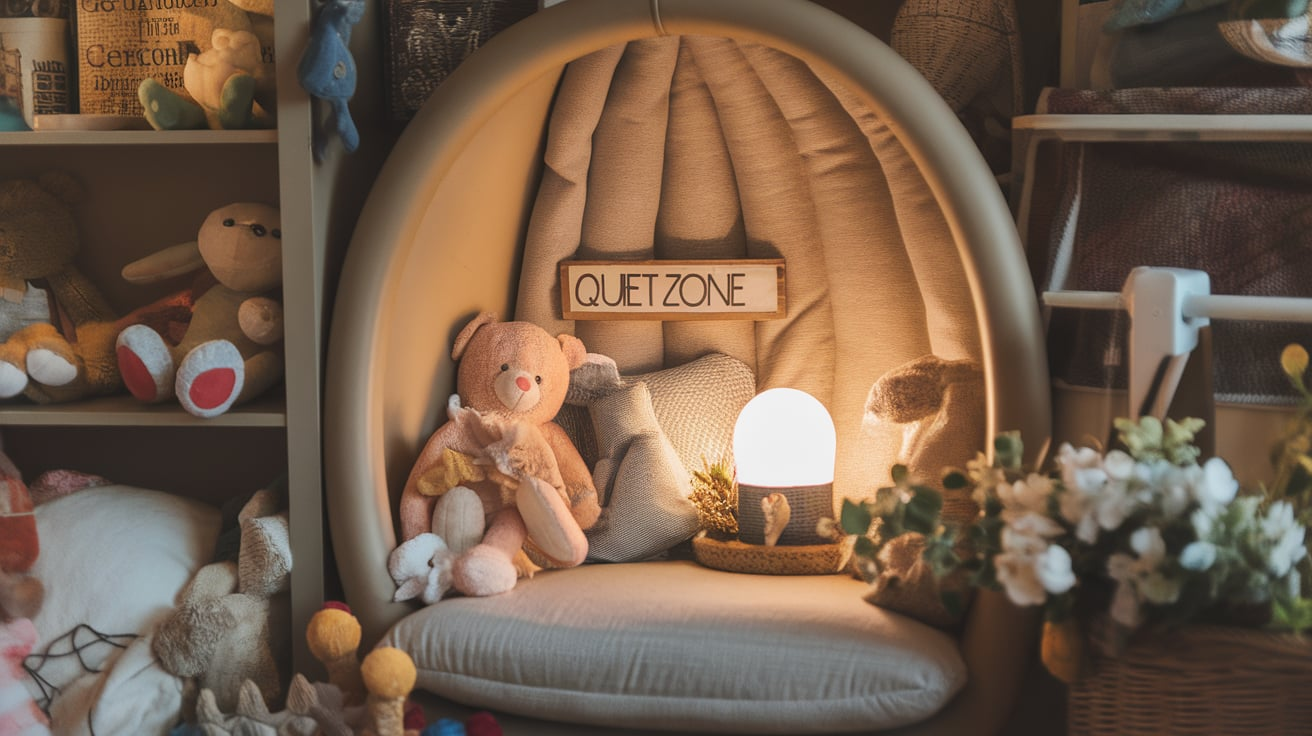
Sometimes kids need a break from loud or busy play. A quiet corner is a space for calm activities like reading, resting, or coloring.
To set it up:
- Add a soft chair or bean bag
- Place a few books and stuffed animals nearby
- Use soft lighting, like a small lamp
- Hang a “quiet zone” sign to remind everyone
It teaches kids to manage their feelings and gives them a peaceful space when they need it.
27. Create a DIY Ball Pit
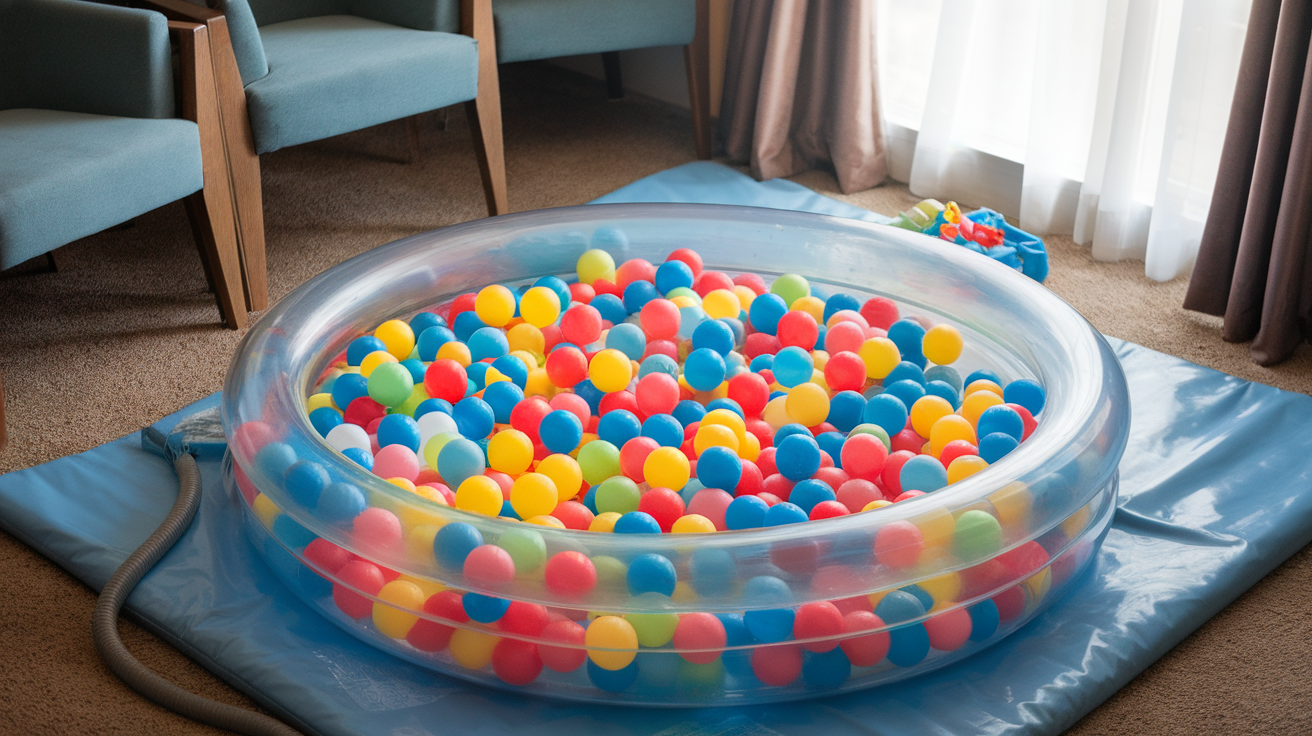
Ball pits are fun and great for movement play. You can make one at home by using:
- A small inflatable kiddie pool
- A plastic playpen or soft-sided box
- Bags of plastic balls (look for deals or used sets online)
It’s perfect for toddlers and preschoolers. Just make sure the area is safe and padded, and always supervise little ones during play.
28. Keep It Simple
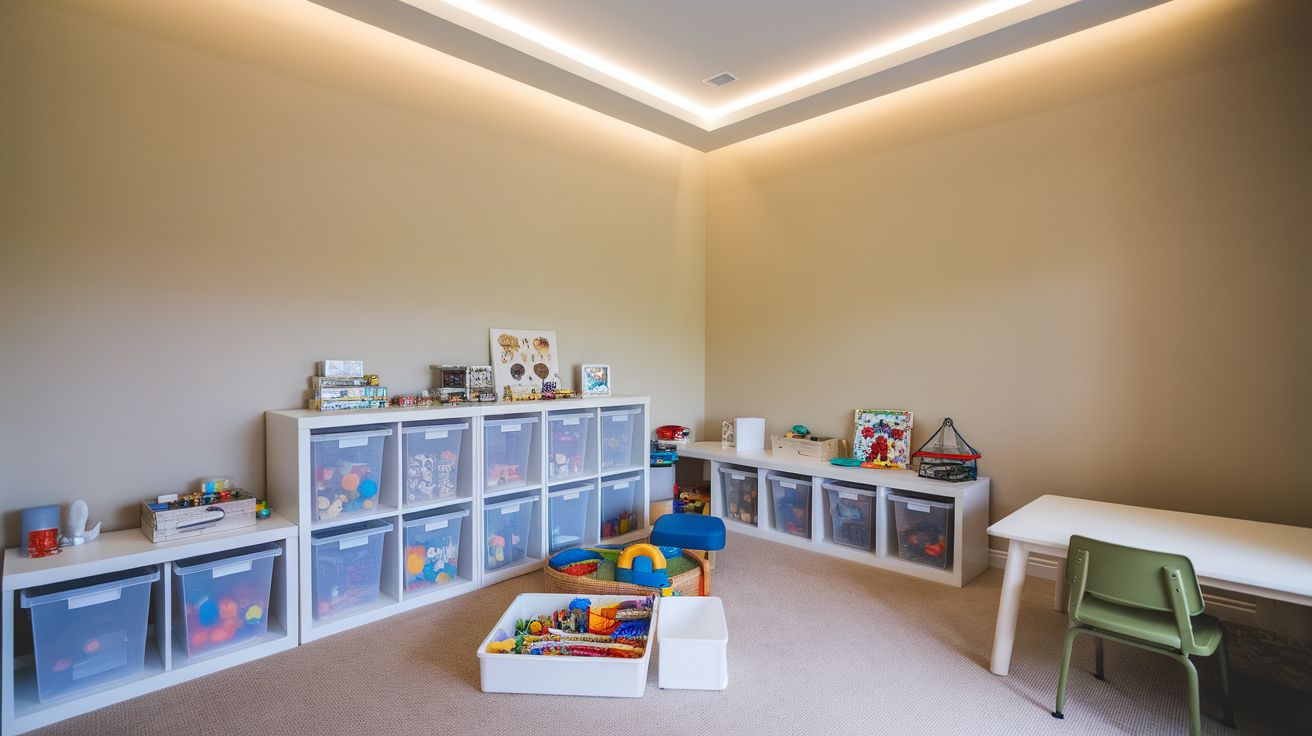
You don’t need to try all the ideas. Even two or three can make a big difference.
Pick the ones that work best for your space, your child’s age, and your budget. Let your child help choose, after all, it’s their playroom.
The goal isn’t to make it perfect. The goal is to create a space that feels fun, safe, and full of imagination.
Tips for Keeping Your Playroom Safe and Kid-Friendly
Safety is super important in any playroom. Some easy tips to help keep things safe and fun for kids are:
- Keep small items out of reach: Use high shelves or locked bins for toys with tiny pieces, especially if you have toddlers.
- Use soft rugs or mats: These help cushion falls and make the room more cozy.
- Anchor tall furniture: Shelves and dressers should be attached to the wall so they don’t tip over if a child climbs them.
- Avoid sharp corners: Use corner guards on tables and other hard edges.
- Choose non-toxic supplies: Pick safe paint, glue, and markers for kids’ art and crafts.
- Add night lights or soft lighting: Good lighting keeps things bright without being too harsh. It also helps avoid trips and falls.
- Teach kids clean-up rules: Keep toys low to the ground and label bins with pictures so even young kids can help tidy up.
A safe playroom means fewer worries and more fun. You don’t need fancy gear, just a few smart choices to make sure the space is ready for lots of happy play.
Conclusion
I hope these playroom ideas help you see that you don’t need a lot of money to create a fun space for your kids.
A few simple changes can make a big difference. Use what you have, get creative, and let your child help with the setup.
You can start small and build as you go. Some of the best playrooms are made with love, not cash.
It’s all about making a space that feels safe, fun, and full of imagination. Select a few ideas that suit your home.
Try them out, and see what your child enjoys most. Remember, play is about joy, not perfection.
Thank you for reading, and I hope you have fun creating a playroom that your kids will love! Let me know which ideas you liked best.

